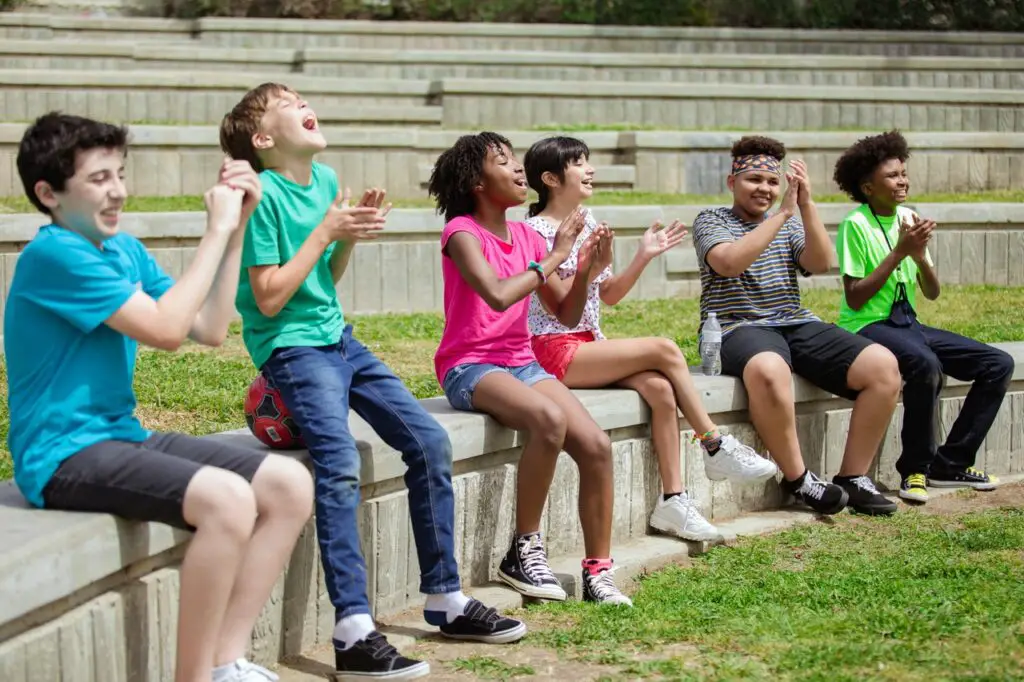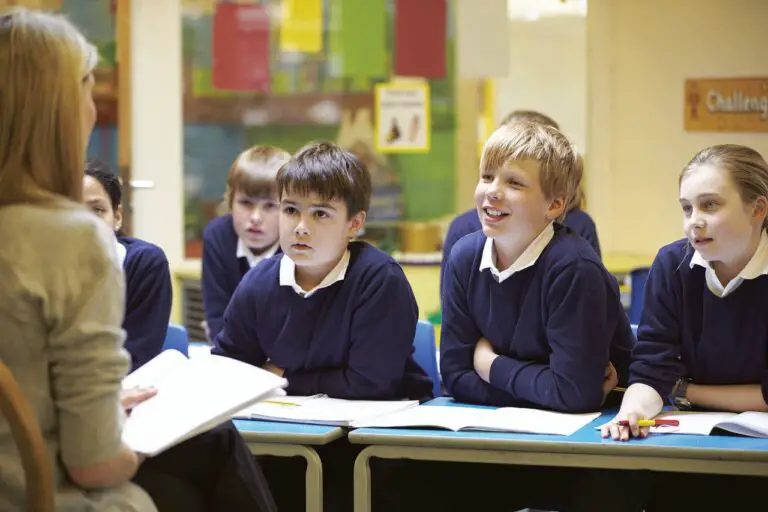Music holds great power. A dramatic chord, a subtle key change or a sudden switch in tempo can have a profound impact on our emotions. There’s a reason music is a big part of every culture in the world. It creates unity, inspiration, focus and love.
Wonderful. But isn’t this supposed to be a website about teaching the English language? What’s music got to do with it?
Well, in the world of EFL/ESL, music is a versatile and potent tool that most teachers don’t use nearly enough.

Music and language are inherently connected. Some say music is a language in itself, with instruments and players bringing their own voices and dialects.
The success of anglophone music in global culture is important, too. You can go almost anywhere in the world and people know songs by The Beatles or, more recently, Taylor Swift.
Rhythm, tone, pitch, expression, structure and improvisation are all things shared by both music and language. Plus, most students like music in some form or another.

So why don’t EFL/ESL teachers use it more? Do you have to be a musician or a trained music teacher to implement it in your classes? No, absolutely not. In fact, I believe anyone can do it.
That’s why I’ve written this article; I’m going to share some common strategies for using music in EFL/ESL, how I think you can improve them, while also adding some alternative ideas which could take your teaching to the next level.
Warning! Be careful with explicit lyrics
Before we start, I just want to give a quick word of warning about songs with explicit lyrics. If you’re teaching in a country where English isn’t the first language, typical sources of music (YouTube is the main example) don’t always have filter English songs.
I’ve found this to be true in Spain. Using primary school computers, you (and your students) can access songs which contain some very colourful vocabulary and themes without needing to confirm your age. More than once I’ve had to intervene after allowing kids to choose songs they like.
So be careful with the type of music you allow. Hip-hop and rap tends to be the worst culprit, but is often the most popular genre. If possible, search for a clean version.
Use music to create the right mood
Many teachers know the trick of putting on some calm classical music to get students in the right frame of mind for quiet writing or book work. It’s surprisingly effective.

But have you thought about playing exciting music to provide energy in an active game? Or what about some cheery, inspirational tunes to start the day? Another great idea is to play a fast-paced, busy song when you’re cleaning up after a messy arts and crafts activity – it helps get things done much faster.
For more on how to do arts and crafts in EFL/ESL, read my article: How to Use Arts and Crafts in EFL/ESL + 7 easy activities.
Tempo and intensity alter the way we behave. It’s a phenomenon used by big stores who play certain types of relaxing and engaging music to make us slow down and spend more time looking at their products. If they put on fast-paced tracks, we’d rush through our shopping and spend less.
You can use this for behaviour management. Quiet, calm music puts students in a more relaxed state of mind. Perfect for those times when you need them to listen, or do some gentle work on their own. Play the music at a low volume and tell students if they can’t hear the music, they’re being too loud.
Not only this, but music can help students focus. You may have experience of this yourself when studying; having some music on in the background helps channels your thoughts.

Be careful, though. Not all music helps concentration. And letting your students choose what songs to listen to while they work is not a good idea at all.
When using music in this way, avoid catchy songs with lyrics. If students can sing, they’ll get distracted. That’s why classical music works so well. For quiet study, I love to play Debussy – the gentle piano is soothing and helps concentration.
TOP TIP: Save a few songs on YouTube as favourites/bookmarks so you can quickly access them in class.
The idea is that the music occupies the part of their mind that would otherwise be focused on chatting to their classmates or messing around. It does this while allowing enough space for the rest of the brain to get on with the task at hand.
But it won’t work for everyone. Observe your class. Many students will react well, but for others, the music might not take up enough of their consciousness to eliminate the impulse of chatting to their friends. On the other side of the spectrum, even gentle music might overwhelm the working part of the brain and stress students out.
Do some experiments. Find out what works and what doesn’t for your particular set of students.
Listen to the lyrics
We just spoke about using music for behaviour management, but that’s not unique to EFL/ESL. So now we’re going to talk about specific uses for our practice.
The most common way teachers use music in EFL/ESL is to listen to lyrics, learning new (or practicing previously learned) vocabulary and grammar.

There are two approaches.
The first is to find a song which uses language you’ve been practicing in class. You could use “Somebody to Love” by Queen to reinforce indefinite pronouns (somebody, anybody, nobody, etc.), or “Hello, Goodbye” by The Beatles for beginner students learning greetings.
This way of doing it is a bit hit-or-miss. Sometimes you can find a song with the target language in, but a lot of the time you can’t.
There are lots of other songs out there which have been specifically written for English learners. They’re great for kids.
Here’s an example of the kind of thing children love. Beware, it’ll get stuck in your head for weeks.
Lots of these videos are fantastic. Make sure to watch and listen all the way through before using in class, though, as quality can vary massively. Some are downright creepy.
The second approach is to take a song students like and study the lyrics. It’s a bit more free-form, with learning targets emerging from the particular set of words, but it shows practical examples of what students already know while introducing them to new vocabulary and phrases.
This is an example of organic vocab acquisition, a fantastic way of adding value to the words your students learn. To find out more, read my article What Vocab Should You Teach in EFL/ESL: Organic acquisition.
I find it much easier to do this than the first approach. Students are invested in the activity because it’s about a song they like, and it seems less like a grammar exercise.
Speaking of which, it’s important not to turn the experience into just another boring listening task.
Personally, I’m not keen on giving students the lyrics with words blanked out that they have to fill in. It’s not a terrible idea, but we can do better.
My preferred method is to have students listen to the song once without subtitles and try to pick up words they recognise, and words they don’t. The ones they don’t, they can make a note of as best they can.

Then we’ll listen again, this time with subtitles. When it gets to those words they didn’t know, they can connect the sound with the word written in the subtitle. After that, students share the new words, and we figure out what they mean.
For grammar structures, I’ll usually read the lyrics beforehand and prepare 4 or 5 lines to focus on. I’ll choose lines that are suitably challenging. Here I can pick things that are related to topics we’ve already studied, and even set up hooks for what we’re going to study in the near future.
For these 4-5 lines, I’ll have students listen to them again and try to discern the meaning. However, I won’t spend too much time on it. Getting bogged down in extended discussion about the details of the grammar draws away from the listening aspect of the activity.
Use singing to practice pronunciation
I know what you’re thinking. Singing? I’ll never get my group of twenty-five teenagers to sing in class! And you must be crazy if you think I’ll sing in front of them on my own!
Don’t worry. You don’t have to start a Glee club or transform yourself into a modern-day Dewey Finn.
Of course, if that kind of thing is right up your street, go ahead and do it. Especially if you’re teaching primary-age kids, getting the whole class to sing along isn’t too difficult, and most of them will really enjoy it.

Find a karaoke track on YouTube and have everyone sing along. Split the class into groups for different parts of the song, and maybe come up with a little dance routine where the dance moves represent the words.
If that kind of thing isn’t possible in your class, here are some reasonable, practical ideas.
- Say the words instead of singing. Pick out words or phrases that are tricky and repeat them in spoken form.
- Read the lyrics like a poem.
- Try saying a few lines very quickly or very slowly, changing up the original rhythm.
Regardless of the way you try to practice pronunciation, make sure students understand the difference between the word when spoken normally and when sung. Often sounds get altered when singing, so always provide the correct form alongside the music.
Discover the rhythm of English
We’re getting into more advanced ideas here, but they’re still very easy to implement by a teacher who has no musical skill or experience.
One way to get students sounding more “English” is to get them thinking about the rhythm.
Rhythm is one of the key things that makes languages unique. The kind of Spanish spoken in Madrid is quick fire and staccato, with a regular beat on each syllable – this is known as syllable-timed isochrony. It’s spoken like: ta-ta-ta-ta-ta.
English, on the other hand, is stress-timed isochrony, which means rhythm varies depending on whether a syllable is stressed or not. It sounds more like: ta-taaa-ta-taaa-ta-ta.
For more information on isochrony (the rhythm of language), read the Wikipedia article here.
Most languages fall into one of these two categories. Generally, Germanic languages have a similar rhythm to English (stress-timed) while most Latin-based tongues are syllable-timed. Asian languages can fall into either camp.
Okay, that’s the theory, now how do you teach this to students?
Clapping.
Yes, it’s as simple as that. Clapping on stressed syllables can help students better perceive rhythm.

To start, do this on individual words with multiple syllables. For example, fantastic.
The word fantastic has a stressed middle syllable: fan-TAS-tic. Get students to clap stronger on the TAS syllable (clap-CLAP-clap).
Of course, to make things a bit more fun, instead of clapping, you can have students hitting drums, tapping the table, or any other form of percussion.
A word notorious for its rhythmic difficulties is vegetable. Lots of English learners say veg-eh-teh-bul. Through this clapping exercise, you can teach them the stress is on the first syllable, and the second syllable is suppressed, making VEG-teh-bul (CLAP-clap-clap).
Once students get the hang of it, move on to short sentences. This helps students hear the rhythm of longer stretches of language and apply it to their own speech.
An even more advanced step is to look at heteronyms. These are words that share the same spelling, but have different meanings and pronunciations. For example, PRES-ent (I give you a present) and pres-ENT (Allow me to present my best friend, Kim).
Talk about the emotions of music
Music is all about feelings. We listen to it in order to stir up some emotion, be it hope, joy, sadness, anger, confidence, or even fear.
In EFL/ESL classes, we can use music to provoke discussion about how we and other people feel.
Before we get stuck into this idea, it’s worth saying this isn’t something young kids will excel at. Before the age of 10-12, most children haven’t developed the emotional intelligence to have a deep conversation about emotions and feelings and their connection to music.
Also, some older students might not be interested in this kind of conversation. Read the room.

Saying that, you don’t have to go particularly deep into this – remember you’re teaching English rather than critiquing and analysing music.
Focus on vocabulary and phrases for expressing feelings. At a basic level, a song can make you happy or sad. Develop that by introducing words like cheerful or gloomy. Throw in nostalgic, pensive and pumped for more advanced students.
With more mature groups, you can start thinking about why you feel those things. This can be thanks to a certain instrument, or a particular phrase in the lyrics that hits home.
Consider getting your students to listen to a song (or even album) as homework and bringing their thoughts and feelings to the next class.
For more homework ideas like this, read my list: 9 Engaging Homework Ideas for EFL/ESL: No worksheets!
Create music together
I’ll admit that in some classes, this is a terrible idea. Without a certain level of ability and a healthy dose of motivation, you’ll struggle to get your students to create anything more than a cacophony.
But you don’t have to write the next Bohemian Rhapsody or Billie Jean. The amount of creative responsibility you put on your students can vary from just singing a cover of a famous song, all the way to writing and performing an original rap.
And remember, the focus of the activity is to practice English, not music. I’ve made the mistake before of letting kids bring instruments to play sections of a song. It failed. Mostly because the kids took so long learning their parts and struggling to practice together, all the while missing out on time focused on English.
So learn from my mistakes. Don’t necessarily ban instruments, but make sure they’re played by someone who can confidently do their without lots of setup and practice during class.
If in doubt, stick to singing/rapping. And focus on the lyrics more than anything else – after all, that’s where the English lies.
Here are the three levels of creative difficulty you can assign to your students:
- Sing the lyrics to a song over a karaoke track.
- Write your own lyrics for a song that already exists and sing them over a karaoke track.
- Write your own lyrics for a completely original song that you compose.
In most cases, levels 1 and 2 are the best. With young kids and beginner classes, level 1 is the limit, as they don’t have the capacity to write original lyrics.
However, for intermediates and above, level 2 is the best. They don’t have to think too much about the musical side of things and are instead challenged to apply their English skills within the limits of the rhythm and rhyming patterns of the pre-existing song.
You’ll need to help them out at times. Rhyming can be tricky, and getting the right number of syllables in a line is also a challenge, especially if they’re attempting a rap.
Level 3 is exclusively for advanced groups who can quickly come up with a melody and rhythm, and even then, it probably won’t progress their English any more than level 2.
Conclusion: Don’t stop me now
As you can tell from this article, there’s a lot you can do with music in EFL/ESL. From behaviour management to vocab acquisition and creative writing, it’s a tool you shouldn’t neglect, even if you’re not a big music-lover.

The thing is, many of your students do love music. You can find a way of engaging them above and beyond the listening and writing exercises of a standard class.
None of the ideas in this article require you to perform music to any level. A lot of it you can do with technology.
The results you can achieve with some simple techniques and a bit of know-how are pretty incredible. So what are you waiting for?
For more tips on EFL/ESL teaching, check out these other articles of mine:
9 EFL/ESL Games and Activities for Intermediate Learners
Why All EFL/ESL Teachers Should Use Role Play Activities
9 Items Every EFL/ESL Teacher Needs for Brilliant Classes
What Should You Teach EFL/ESL Students? New teacher guide
Gamification in EFL/ESL: Guide to motivating students
9 Best Free Apps for EFL/ESL Teachers and How to Use Them
How to Give Instructions in an EFL/ESL Lesson: 5 best tips
Best Method for Correcting EFL/ESL Writing: 9 Step Guide







